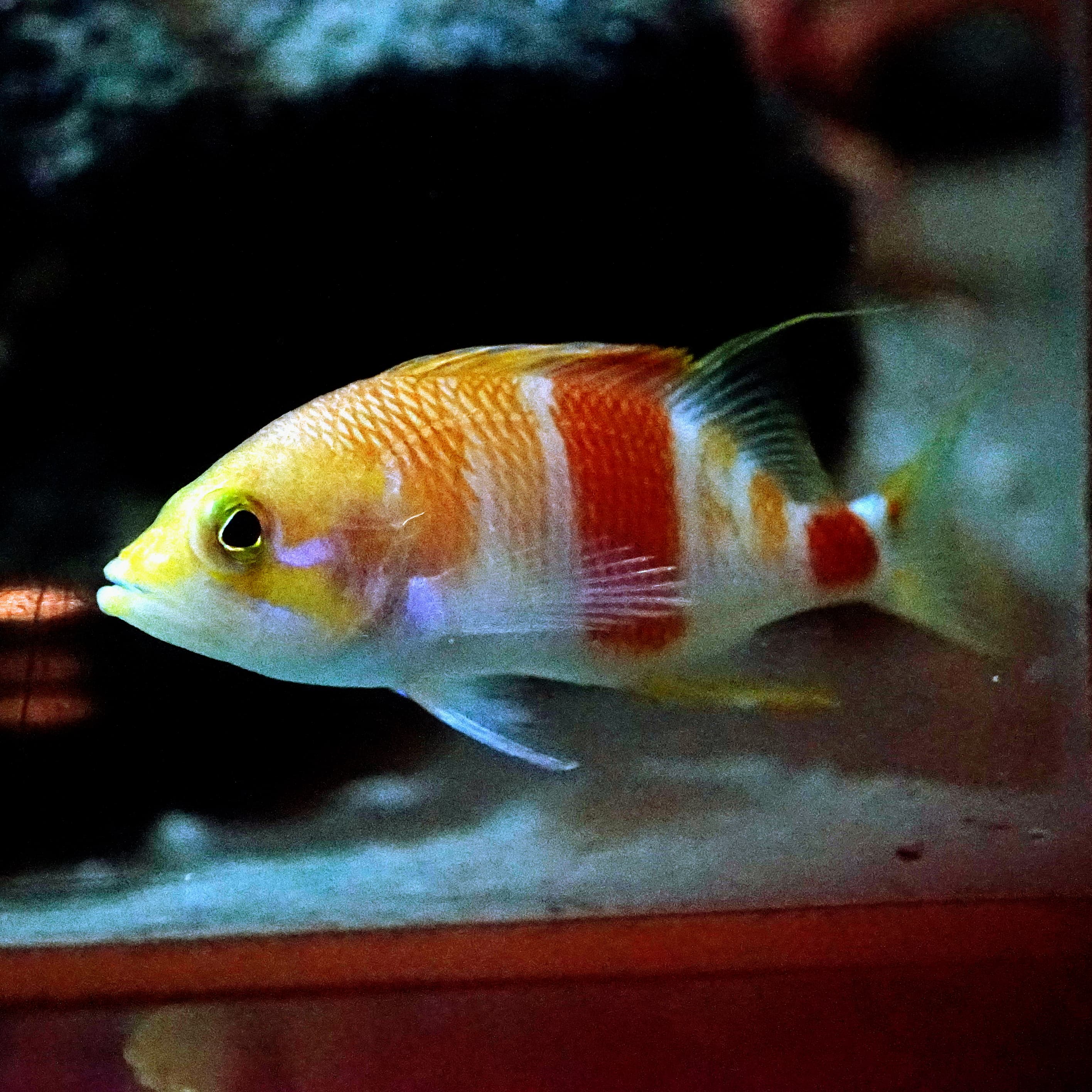Common name: Eastern Flower Porgy
General Information
The Zalanthias kelloggi, commonly known as the Eastern Flower Porgy, is a stunning and rare fish species belonging to the family Serranidae. It was originally described as Plectranthias kelloggi and has since been reclassified into the genus Zalanthias. This species is native to the western Pacific Ocean, with its range extending from the Philippines to Papua New Guinea and surrounding areas. It inhabits deep reefs and slopes, often at depths exceeding 100 meters, making it a unique and challenging addition to the aquarium trade.
The Eastern Flower Porgy is highly sought after by advanced aquarists due to its vibrant pinkish-red coloration with yellow accents, which adds a splash of color to any tank. Its rarity in the wild and the difficulty of collection contribute to its exclusivity. The species is named in honor of Vernon Lyman Kellogg, an entomologist and colleague of ichthyologist David Starr Jordan at Stanford University.
Details
- Estimated price
- Expensive High price due to rarity and collection difficulty
- Recommended minimum volume
- 200 liter (53 gallons)
- Salinity
- S.G. 1.025 to 1.026
- Temperature
- 22 to 26 °C (72 to 79 °F)
- Acidity
- pH 8 to 8.5
- Average size
- 12 cm (5″)
- Care level
- Difficult Requires advanced care due to deep-water origins
- Diet
- Carnivore Feeds on crustaceans and zooplankton; prefers frozen and live foods
- Social
- Solo Best kept solo or in pairs due to territorial tendencies
- Reefsafe
- Yes
- Aggression
- Peaceful Shy and reclusive; avoid aggressive tankmates
- Captive bred
- No
Taxonomy
- KingdomAnimalsAnimalia
- PhylumChordatesChordata
- ClassRay-finned FishesActinopterygii
- OrderPerch-like FishesPerciformes
- FamilyGroupersSerranidae
- GenusZalanthiasZalanthias
- SpeciesEastern Flower PorgyZalanthias kelloggi (Jordan & Evermann, 1903)
- SynonymsAnthias kelloggi Jordan & Evermann, 1903Anthias rubromaculatus Borets, 1982Plectranthias azumanus (Jordan & Richardson, 1910)Plectranthias kelloggi (Jordan & Evermann, 1903)Plectranthias kelloggi azumanus (Jordan & Richardson, 1910)Plectranthias kelloggi melanesius Randall, 1980Plectranthias rubromaculatus (Borets, 1982)Pseudanthias azumanus Jordan & Richardson, 1910Pseudanthias kelloggi (Jordan & Evermann, 1903)
- Source: GBIF | Global Biodiversity Information Facility
Care
Caring for Zalanthias kelloggi requires advanced knowledge and preparation. This deep-water species thrives in aquariums designed to mimic its natural habitat, with subdued lighting and plenty of hiding spots created by live rock or artificial structures. Stable water parameters and a calm environment are essential, as this fish is shy and may take time to acclimate to captivity.
Due to its deep-water origins, Zalanthias kelloggi is sensitive to changes in water pressure and temperature. A gradual acclimation process is crucial when introducing this fish to a new tank. A well-established aquarium with excellent water quality is a must to ensure its health and longevity.
Diet and Feeding
In the wild, Zalanthias kelloggi is a carnivorous species that feeds on small crustaceans and zooplankton. In captivity, it should be offered a varied diet consisting of high-quality frozen foods such as mysis shrimp, brine shrimp, and finely chopped seafood. Enriched live foods can also help entice feeding, especially during the acclimation period.
Feeding should be done multiple times a day in small portions to mimic its natural feeding habits. Over time, it may adapt to eating high-quality pellets or flakes, but frozen and live foods should remain a staple in its diet to ensure optimal health.
Behavior and Compatibility
Zalanthias kelloggi is a peaceful and reclusive species, often preferring to stay hidden among rocks and crevices. It is best housed in a species-specific tank or with other non-aggressive, reef-safe fish. Avoid keeping it with boisterous or territorial species, as this can cause stress and inhibit its natural behavior.
This species is best kept solo or in a pair, as it may exhibit territorial behavior towards conspecifics in confined spaces. Providing ample hiding spots and a low-stress environment will encourage it to display its natural behaviors and vibrant coloration.
Health and Common Issues
Due to its deep-water origins, Zalanthias kelloggi is susceptible to stress and related health issues if not provided with a suitable environment. Common problems include difficulty acclimating to captivity, refusal to eat, and susceptibility to marine diseases such as ich. Ensuring stable water parameters, a stress-free environment, and a high-quality diet are key to maintaining its health.
When selecting a specimen, look for active individuals with vibrant coloration and no visible signs of disease or injury. Quarantining new arrivals is highly recommended to prevent the introduction of pathogens into the main tank.
Habitat
Zalanthias kelloggi is native to the Indo-Pacific region, with its range extending from the Philippines to Papua New Guinea and surrounding areas. It inhabits deep reefs and slopes, often at depths exceeding 100 meters. These environments are characterized by low light levels, cooler temperatures, and an abundance of crevices and overhangs for shelter.
Replicating these conditions in captivity is essential for the well-being of this species. Subdued lighting, stable water temperatures, and plenty of hiding spots will help create a suitable environment for Zalanthias kelloggi.
